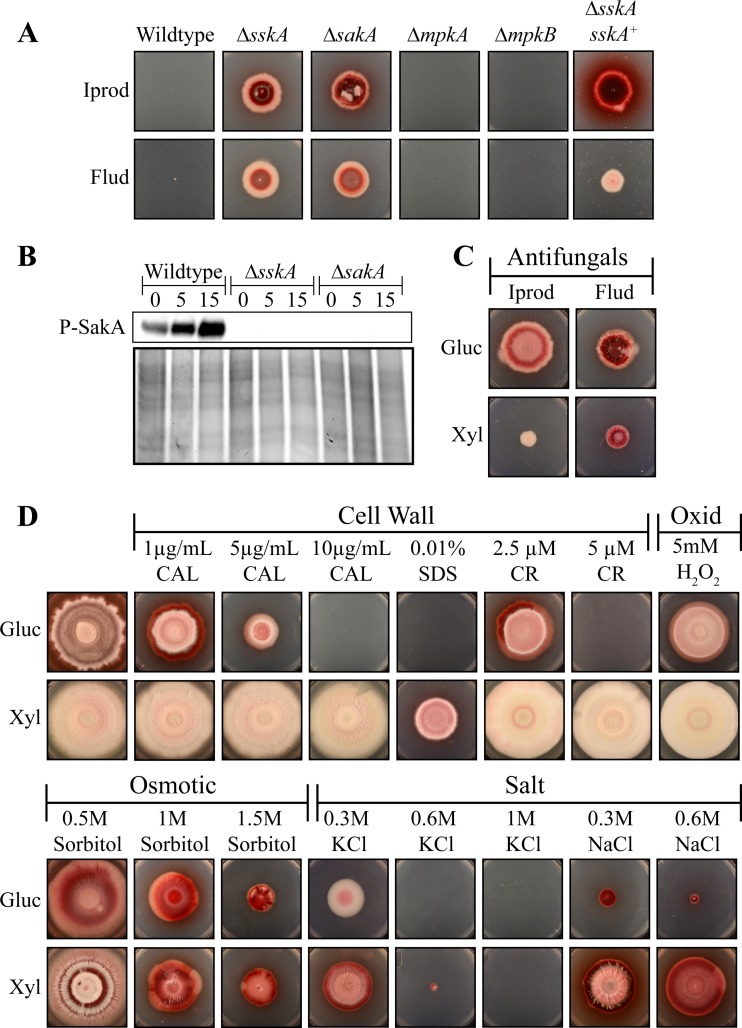FIG 6 .
SskA acts upstream of SakA during cell wall, oxidative, osmotic, and salt stress adaptation. (A) The wild-type, ΔsskA, ΔsakA, ΔmpkA, ΔmpkB, and ΔsskA sskA+ strains were grown for 14 days at 25°C on phenylpyrrole (iprodione) or dicarboximide (fludioxonil) fungicides. The ΔsskA, ΔsakA, and ΔsskA sskA+ strains show resistance to both iprodione (Iprod) and fludioxonil (Flud). (B) Western blot of phosphorylated SakA (P-SakA) in total denatured protein extracts from the wild-type, ΔsskA, and ΔsakA strains grown for 2 days at 25°C and transferred to media containing 0.3 M NaCl for 0, 5, or 15 min. (C) Growth after 14 days at 25°C of the ΔsskA xylP(p)::sakAF316L strain on dicarboximide (fludioxonil) or phenylpyrrole (iprodione) fungicide and either glucose (noninduced) or xylose (induced). On glucose, the ΔsskA xylP(p)::sakAF316L strain exhibits the ΔsskA phenotype of resistance to both fludioxonil and iprodione. Growth on xylose, and consequent expression of xylP(p)::sakAF316L, partially suppresses this phenotype. (D) Growth after 14 days at 25°C of the ΔsskA xylP(p)::sakAF316L strain on various stress-inducing agents (calcofluor white [CAL], sodium dodecyl sulfate [SDS], Congo red [CR], hydrogen peroxide [H2O2], sorbitol, potassium chloride [KCl], and sodium chloride [NaCl]) and either glucose (noninduced) or xylose (induced).

